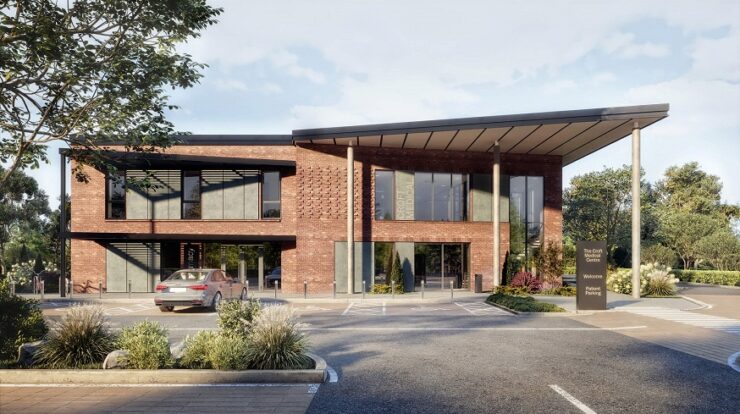
Introduction
In the bustling world of architecture, where vision meets functionality, the art of rendering plays a pivotal role. Architectural rendering services serve as the bridge between imagination and reality, offering architects and clients alike a glimpse into the future. From intricate skyscrapers to serene landscapes, these services breathe life into blueprints and transform dreams into tangible forms. The realm of architectural rendering services, exploring their significance and impact on the architectural landscape.
The Evolution of Architectural Rendering
Before the advent of digital technology, architectural renderings were meticulously crafted by hand, employing techniques ranging from watercolor to pen and ink. While these methods showcased the artist’s skill, they often proved time-consuming and limited in their ability to convey complex designs. However, with the rise of computer-aided design (CAD) software and advanced rendering techniques, architects gained a powerful tool for visualization. Digital rendering allows for unparalleled precision and detail, enabling architects to explore various design iterations and present their concepts with stunning realism.
Enhancing Visualization: The Power of Photorealism
One of the most significant advancements in architectural rendering services is the attainment of photorealism. Gone are the days of flat, two-dimensional drawings—modern renderings boast lifelike textures, lighting, and atmospherics that blur the line between fiction and reality. By harnessing techniques such as ray tracing and global illumination, rendering artists can simulate natural light and shadow with breathtaking accuracy. This level of realism not only aids architects in communicating their designs but also allows clients to envision the result with unprecedented clarity.
From Concept to Construction: Streamlining the Design Process
In the fast-paced world of architecture, time is of the essence. Architectural rendering services expedite the design process by enabling architects to iterate rapidly and visualize concepts in real time. With the ability to create 3D models and generate renderings swiftly, designers can explore different architectural styles, materials, and spatial arrangements with ease. Moreover, these renderings serve as invaluable tools during client presentations and stakeholder meetings, facilitating constructive feedback and informed decision-making. By streamlining the design process, rendering services empower architects to bring their visions to fruition efficiently and effectively.
The Role of Landscape Architects: Shaping Outdoor Spaces in the UAE
In the dynamic urban landscape of the United Arab Emirates (UAE), landscape architecture plays a crucial role in shaping outdoor environments that harmonize with the surrounding infrastructure. From verdant parks to innovative urban plazas, landscape architects UAE are tasked with creating outdoor spaces that inspire, rejuvenate, and connect communities.
With a focus on sustainability and cultural sensitivity, these professionals integrate indigenous plant species, water-efficient design principles, and innovative technologies to craft landscapes that thrive in the arid climate of the region.
Blending Tradition with Innovation: Designing Iconic Landmarks
In a region known for its architectural marvels, landscape architects in the UAE face the unique challenge of blending tradition with innovation. From the iconic skyline of Dubai to the tranquil oases of Abu Dhabi, these designers draw inspiration from the rich cultural heritage of the UAE while embracing cutting-edge techniques and materials. Whether creating urban green spaces that mitigate heat island effects or designing waterfront promenades that celebrate the nation’s maritime heritage, landscape architects play a pivotal role in shaping the built environment of the UAE for generations to come.
Harnessing Technology: Digital Tools for Landscape Design
Similar to their counterparts in architectural rendering, landscape architects leverage digital tools and rendering software to visualize and communicate their designs effectively. Through the use of GIS mapping, drone surveys, and 3D modeling software, designers can analyze site conditions, simulate environmental factors, and generate immersive renderings that showcase their vision. By harnessing the power of technology, landscape architects in the UAE can create sustainable, resilient landscapes that respond to the unique challenges and opportunities of the region.
Advantages of architectural rendering services
Architectural rendering services offer a plethora of advantages that revolutionize the design and presentation processes within the architectural industry.
Visualizing Concepts
Architectural rendering services provide architects, clients, and stakeholders with the ability to visualize concepts in vivid detail. By transforming abstract ideas into photorealistic images or animations, renderings help everyone involved gain a clear understanding of the proposed design, its spatial layout, and its aesthetic qualities.
Realistic Representation
Modern rendering techniques enable the creation of highly realistic images that closely resemble the final built environment. From textures and lighting to materials and landscaping, renderings capture every detail with precision, allowing stakeholders to envision the project as it will appear upon completion.
Design Iteration and Flexibility
Renderings facilitate the exploration of various design iterations and options without the need for costly physical models or construction. Architects can quickly modify elements such as building materials, colors, and spatial configurations, enabling efficient decision-making and refinement of the design concept.
Marketing and Presentation
High-quality renderings serve as powerful marketing tools for architects and developers, helping to attract clients, investors, and buyers. Whether showcased in brochures, websites, or presentations, compelling renderings effectively communicate the project’s vision and value proposition, enhancing its marketability and appeal.
Cost and Time Savings
Architectural rendering services offer significant cost and time savings compared to traditional methods of visualization. By eliminating the need for physical models and expedited construction, renderings reduce project expenses and accelerate the design process, leading to faster approvals and project timelines.
Enhanced Communication and Collaboration
Renderings facilitate clearer communication and collaboration among architects, clients, and project stakeholders. Visual representations enable stakeholders to provide feedback and input more effectively, fostering a collaborative design process that results in greater satisfaction and alignment of expectations.
Risk Mitigation
By providing stakeholders with a comprehensive understanding of the design concept before construction begins, renderings help mitigate risks associated with design errors, misinterpretations, and changes during the construction phase. This proactive approach minimizes costly revisions and delays, ensuring smoother project execution and delivery.
Environmental Impact Assessment
Architectural renderings can be used to assess the environmental impact of proposed developments, such as urban planning projects or infrastructure upgrades. By simulating factors like sunlight exposure, shading, and energy consumption, renderings help architects and planners make informed decisions that promote sustainability and minimize environmental footprint.
Conclusion
In the ever-evolving world of architecture and landscape design, rendering services serve as indispensable tools for visualization and communication. From the intricate details of a skyscraper’s facade to the sweeping vistas of a desert oasis, rendering artists bring visions to life with unparalleled precision and realism. In the UAE, landscape architects play a vital role in shaping outdoor spaces that reflect the nation’s identity, culture, and aspirations. By harnessing the power of technology and embracing innovative design principles, these professionals are transforming dreams into reality, one rendering at a time.
